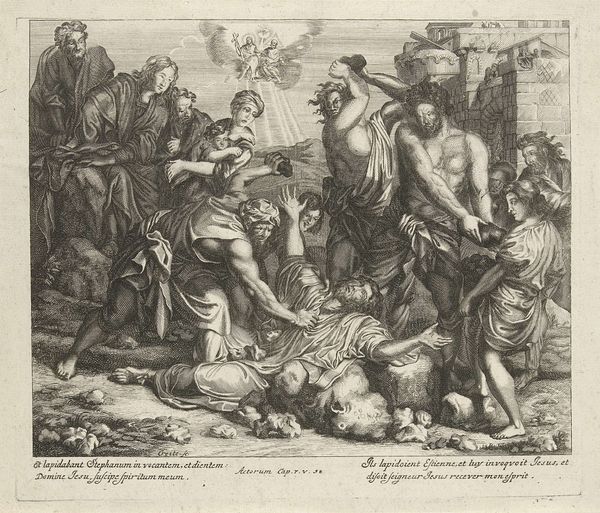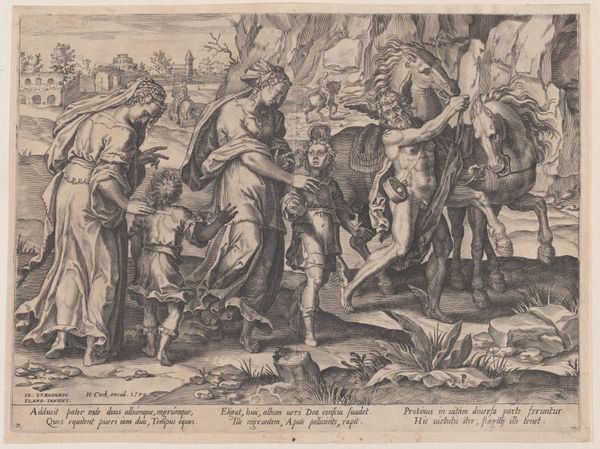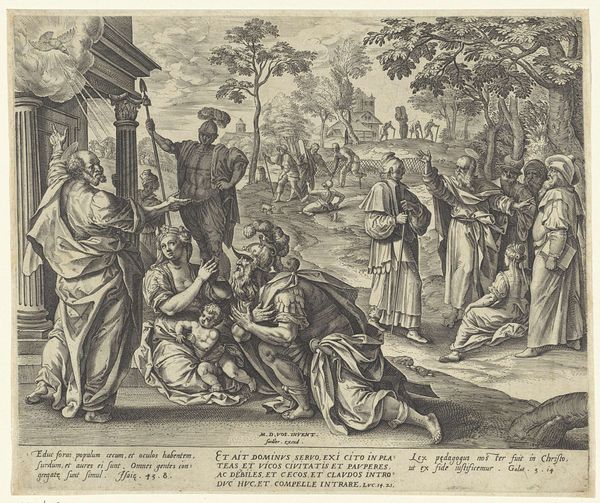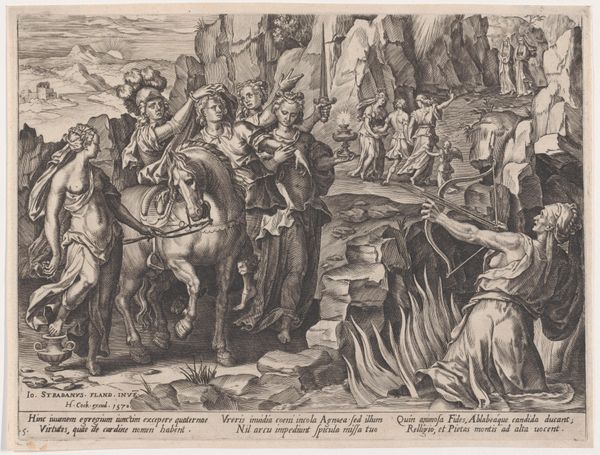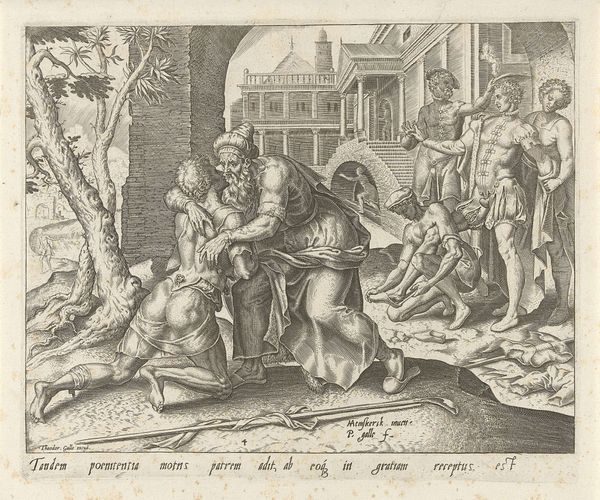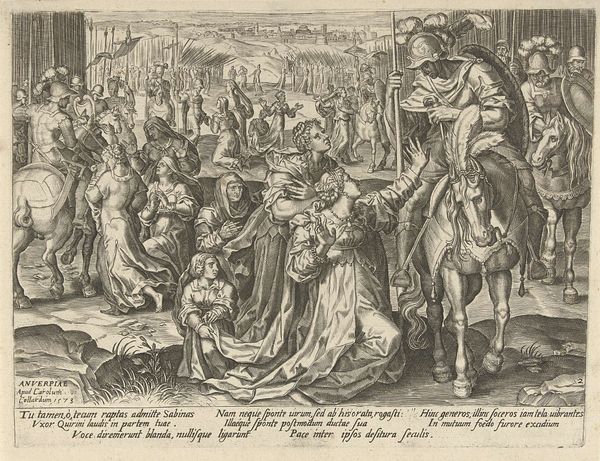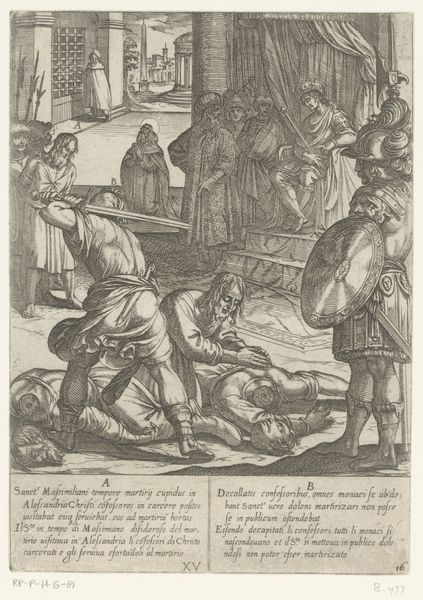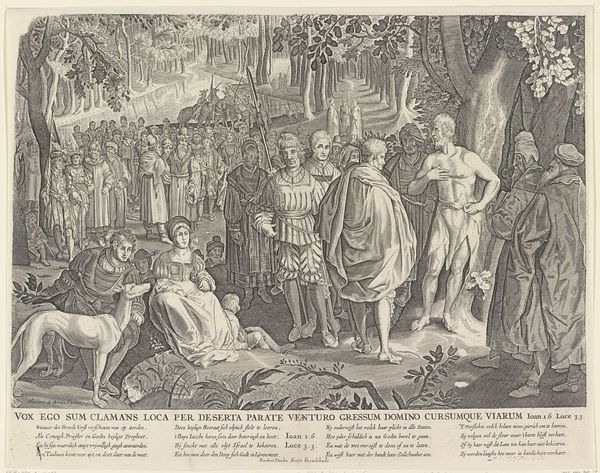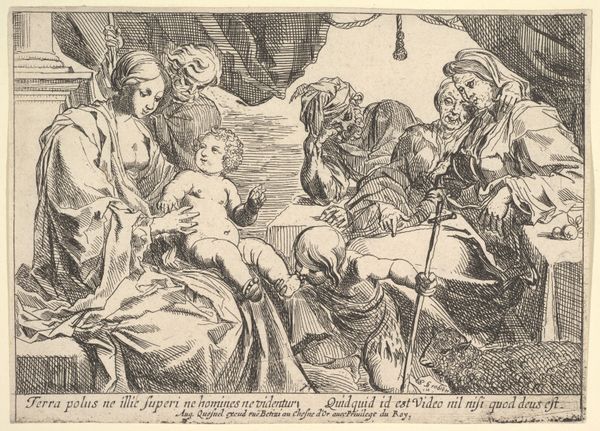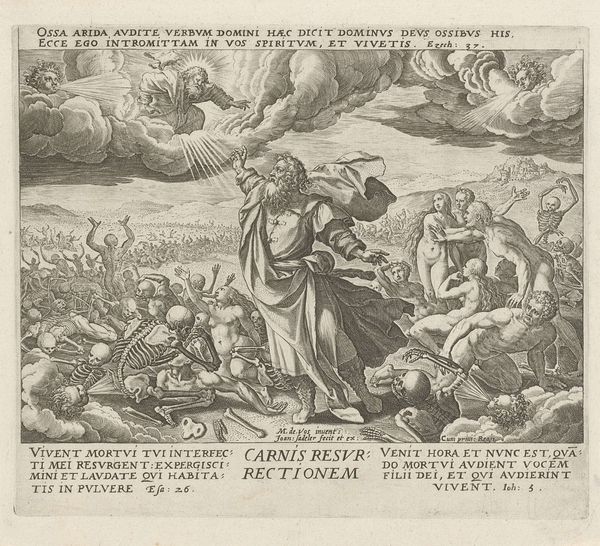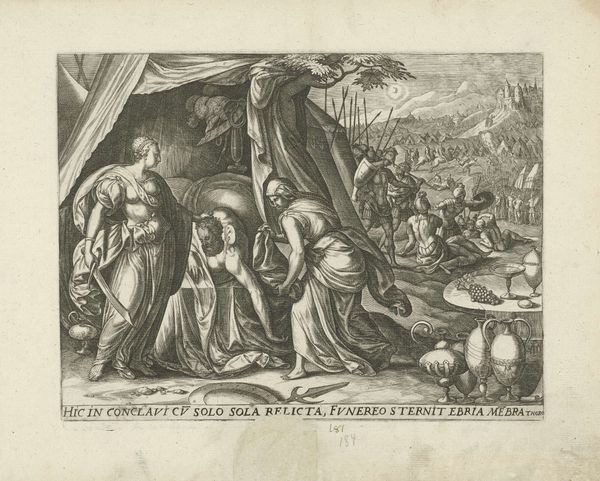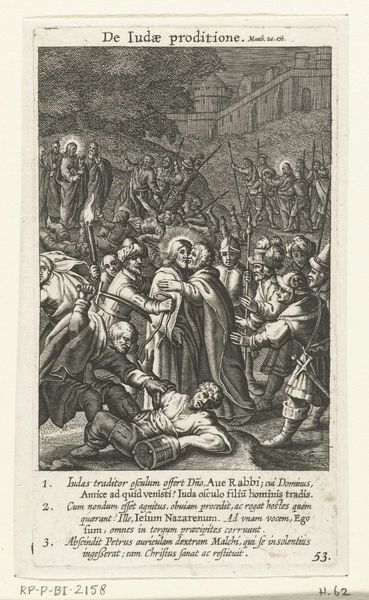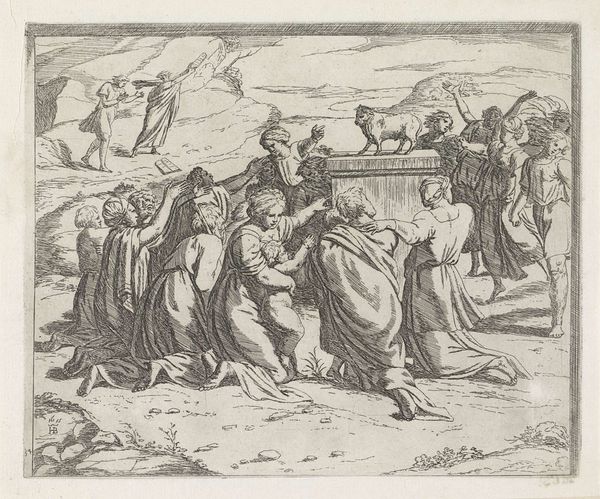
print, etching, intaglio, engraving
#
medieval
# print
#
pen illustration
#
pen sketch
#
etching
#
intaglio
#
old engraving style
#
figuration
#
pen-ink sketch
#
pen work
#
history-painting
#
northern-renaissance
#
engraving
Dimensions: height 219 mm, width 311 mm
Copyright: Rijks Museum: Open Domain
Editor: This is "Bewening," an engraving by Frans Huys, dating back to sometime between 1546 and 1562. The density of the figures and stark contrast give it a very dramatic feel. What strikes you when you look at it? Curator: Well, first, the layers of meaning embedded within this Northern Renaissance print are striking. Look at the central scene - the deposition of Christ. But let's consider it in a broader context. How does this representation of grief and sacrifice speak to contemporary ideas about power and vulnerability? What sociopolitical anxieties might it reflect or attempt to alleviate? Editor: I see. It's not just about the religious story, but about the people who commissioned it, and the world they lived in. Curator: Precisely. This wasn't simply devotional art; it's a carefully constructed message. Notice the inscription – *Commendat charitatem suam Deus in nobis* – it speaks of God's love, but how might the ruling elite have used such imagery to reinforce their authority, their divine right? The idealized figures, the controlled emotion… It all serves a purpose. Editor: So you're saying that even seemingly straightforward religious imagery can be read as a form of propaganda? Curator: It's not necessarily blatant propaganda, but rather a subtle negotiation of power. The print highlights charity and obedience. What role does gender play here, for instance? How are the female figures positioned in relation to Christ, and what does that suggest about the expected roles of women in that era? Think about the construction of femininity – as pious, grieving, supportive – and how this might uphold existing social structures. Editor: That's a perspective I hadn't considered. It’s far more complex than just a scene of mourning. Curator: Exactly! By interrogating these visual cues, we can start to unravel the intricate web of social, political, and religious ideologies woven into the artwork. Editor: Thank you. I will certainly think about historical and political context next time I look at similar artworks. Curator: Indeed, and it enriches the artwork by offering a deeper appreciation of its artistic message!
Comments
No comments
Be the first to comment and join the conversation on the ultimate creative platform.
